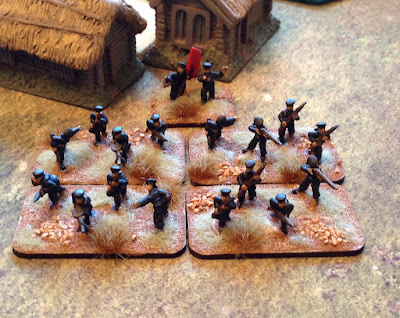This is the latest in the Osprey Elite series by David Greentree. Over the century, they probably justified being in the Elite series, although often, naval infantry were simply sailors taken off ships and sent to the front. This book should be popular with wargamers, looking for some variety when painting Soviet armies.
The organisation of naval infantry varied according to the fleet and the equipment available. A naval infantry brigade typically had 4-6 infantry battalions and support weapons. Tanks depended on what was available locally, but the T-26 light tank was a standard option. Even more than the western Allies, there was always a shortage of specialised landing craft. So, all types of ships, military and civilian, were used. The US Pacific Fleet provided 30 LCI to enable Soviet naval infantry to attack the Japanese Kuril Islands at the war's end.
The book covers all the main operations. Some are familiar, like the Kuban Bridgehead and the Crimea. However, others, like the Artic in 1940-41, are interesting. Naval infantry landed behind the Germans advancing on Murmansk, hindering their offensive, and keeping that vital supply route open. The Baltic operations, including attacks on Finnish islands, offer a different scenario. They also helped storm Budapest from the Danube.
After the war, only six naval infantry brigades and ten separate battalions remained operational. However, as the Cold War developed, there was an expansion of the naval infantry. This included a strategic role in seizing vital sea lanes through narrows and straits. I feel a modern Turkish scenario coming on! By the mid-1980s, each naval infantry brigade (2,059 all ranks) had three infantry battalions, each with three rifle companies, plus a tank battalion equipped with PT-76s and T-54/55s. Naval infantry became an all-volunteer elite force. The distinctive black uniforms also started to give way to camouflage suits that are a nightmare to paint.
I really enjoyed this book. So well written, with operations I wasn't familiar with. And as usual lovely colour plates and plenty of period photographs.
 |
| Some of my WW2 naval infantry in 15mm. |

Thanks for the review - it sounds an interesting book.
ReplyDeleteAs you suggest, Soviet naval infantry are good for variety. I have ‘em in not only 20mm and 15mm scales, but also in 6mm (lovely figures from 2D6 Wargaming).
Cheers,
Geoff
Thanks. I am tempted to add a unit into my 28mm Soviet Army. The colour plates provide some inspiration, particularly the guy centre on the cover.
Delete